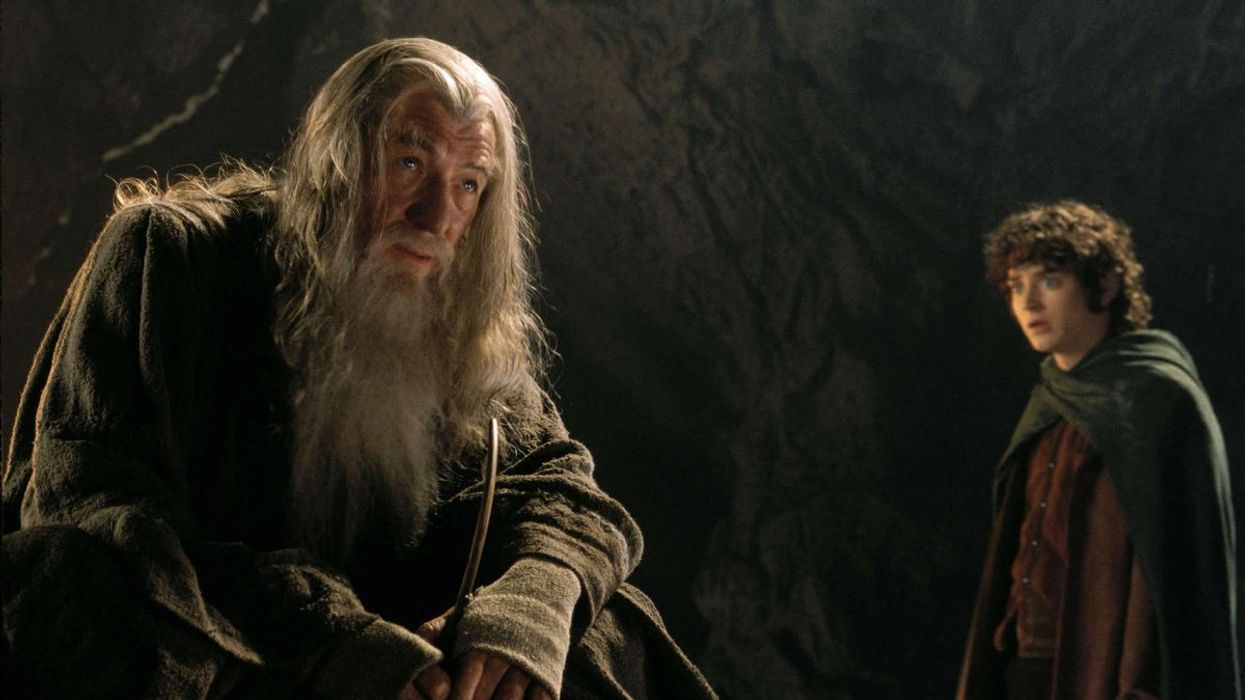8 Great Filmmaking Lessons from 'The Lord of the Rings: The Fellowship of the Ring'
Adding a crew break for second breakfast is at the top of the list!

It's hard to believe now, but there was a time when Peter Jackson was known as a genre-bending director who filmed mostly indies. Maybe that's because I have pushed Meet the Feebles from my brain after it damaged me so much. But nevertheless, Lord of the Rings was one of the movies that made me want to work in Hollywood. It took me to a world so different than my own, and for three hours it kept me on the edge of my seat.
There have been other LOTR movies and a whole Hobbit series, but I wanted to focus today's lessons on the film that started it all.
So assemble your closest friends, grab your Elven sword, and let's ride out on an adventure together.
8 Great Filmmaking Lessons from The Lord of the Rings: The Fellowship of the Ring
1. Give every character a voice.
There are so many speaking roles in this movie, but it still feels like each character has a distinct voice. Even amongst characters of the same ilk, like hobbits, the personalities shine through and create deep characters for actors to embody.
In your own writing, look at the names on the page and see if you can tell what makes each person different.
Here's another trick. If you cover the character's name, do you still know who is speaking, simply by the way they talk?
2. Does your cinematography reflect the genre?
LOTR is a fantasy adventure that has the cinematography to go with it. We have sweeping wide shots and long takes within battle scenes. The inclusion of these epic pans and lingering shots gives us a sweeping feeling that fits perfectly with the genre. We will get to the editing later.
The camera is allowed to move freely, but not afraid to sit on scenes, in closeups, and situate itself to tell the story. Think about the shots that make the most sense for your tone and story and focus on them.

3. Admit mistakes, then fix them.
A few weeks into the movie, Jackson knew something was wrong. The actor playing Aragorn, Stuart Townsend, wasn't fitting into the world correctly.
Instead of just shooting a movie with something off, Jackson did the difficult thing and moved on from Townsend. He admitted his mistakes, but instead of letting it ruin the undertaking, he worked to fix the situation, eventually getting the right actor for the role.
I think we can all agree that Viggo Mortensen made the perfect King of Gondor.
4. Adapt the story, not the source material.
Much respect to Tom Bombadil, but leaving him out of the movie was one of Jackson's best edits.
Even being a big fan of the work, Jackson knew where to trim and edit Tolkein's masterpiece. Books are different than movies (duh) and you want to keep the core of the story, the major beats, but manage the other details so they fit the general narrative.

5. Be practical.
The reason TheLord of the Rings movies never seems to age is that they did so many special effects practically.
I just watched the 4K restorations, and they are like watching vivid paintings. I think one of the many reasons they hold up is that many, if not most, of the special effects were done practically. Forced perspective made the hobbits look short and Gandalf look large. Makeup and choreography made all the battle sequences look real. The orcs are people in costume, not CGI foes.
When you can, save money and see if there is a practical way to accomplish your goals.

6. Find a good editor.
This movie is around three hours long, and even though the director's cut is much longer, the editing is wondrous.
I found that the whole movie feels like a ballad. It starts with an overture, and then we head into what feels like the ups and downs of a great song, leaving us singing the chorus. It never feels like the scenes are forced together or sped up. Everything has its place.
Again, even a long movie can feel tight.
7. Know your themes.
At the core of The Lord of the Rings is a struggle between good and evil. There are ideas like friendship, loyalty, and brotherhood, but everything comes back to good and evil.
Knowing that, Jackson uses this lens to look at every character's heart. Every scene is built around the choice between good and evil. We see the temptation of Boromir, the choices of the Fellowship to unite, and even of Frodo to provide the ultimate sacrifice.
If you know your theme, you can make the story sing.

8. Always leave them wanting more.
The ending of The Fellowship of the Ring propels us toward the sequel. It leaves us with a lot of adventure on the table and desperate for whatever comes down the line.
If you had to take one lesson from this movie, it would be to lean into the audience, even at the end of your story. You don't want to leave them feeling like they had enough—you want to leave them dying to have more.
Let me know what you think of these lessons in the comments.
What's next? Get our free screenwriting eBook!
So much of what we're talking about on No Film School when it comes to screenwriting is summarized in our new eBook. It also helps guide you through a 10-week writing plan that will get your script actually finished.











